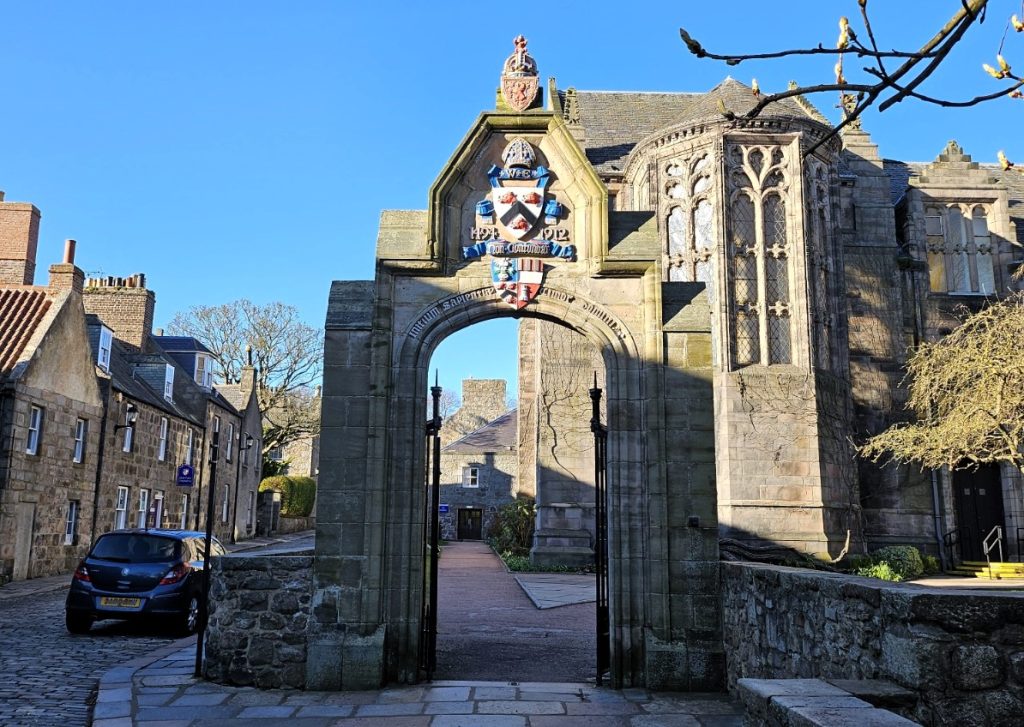Aberdeen, known as the “Granite City” and the “Oil Capital of Europe”, is one of Scotland’s most emblematic cities. Its rich history, spanning from the earliest human settlements to becoming a nerve center of the energy industry, makes Aberdeen a fascinating destination for both historians and travelers. This article explores the evolution of Aberdeen over the centuries, highlighting its historical milestones, architectural heritage, and role in the modern economy.

Human Origins and Early Settlements
The earliest evidence of human life in Aberdeen dates back to 6000 B.C., when hunter-gatherers settled at the mouths of the Dee and Don rivers. Later, around 2000 B.C., the Beaker People left their mark in the area by constructing the mysterious stone circles still found in Aberdeenshire, showcasing a rich prehistoric history.
Royal Status and Reconstruction: The Transformation of Aberdeen
In 1319, Aberdeen acquired the status of royal burgh, marking the beginning of an era of significant growth and development. However, in 1336, the city suffered a devastating fire caused by Edward III of England, which razed much of its structures. Despite this destruction, Aberdeen was quickly rebuilt and expanded under the name of New Aberdeen, consolidating its position as an important urban center in Scotland.
Geography and Connectivity
Geographically, Aberdeen is situated on the northeastern coast of Scotland, in the United Kingdom. The city boasts excellent communication by air, sea, and land, with a network of roads connecting it to other points of interest, such as Inverness (Highlands), Dundee, and Edinburgh. This connectivity has been crucial for its economic development and growth as a commercial hub.
Population and Foundation
In terms of population, Aberdeen is the third-largest city in Scotland. Its modern foundation was established in the late 19th century with the merger of Old Aberdeen and the fishing village of New Aberdeen. This fusion not only increased its size but also enriched its cultural and economic diversity.
Granite Industry: “The Silver City with Golden Sands”
Aberdeen is world-renowned for the extraction of grey granite, a material used to construct most of the buildings erected from the mid-18th century until the second half of the 20th century. Many of these constructions feature mica inlays, which add a shine similar to silver, earning the city the nickname “Silver City with Golden Sands”. The oldest neighborhoods, such as Castlegate with houses from the 13th and 14th centuries, St. Machar’s Cathedral, and the main streets and squares, are particularly appreciated by tourists for their historical architecture and timeless charm.
Discovery of Oil and the Economic Revolution
The discovery of oil in the North Sea in the 1960s radically transformed Aberdeen’s economy. With the exploitation of oil fields, Aberdeen solidified its position as the “Oil Capital of Europe”. This industry not only spurred economic growth but also attracted professionals and companies from around the world, further diversifying the local economy and positioning Aberdeen as a crucial center in the global energy industry.
Modernity and Heritage: Contemporary Aberdeen
Today, Aberdeen is a vibrant commercial and cultural center that attracts visitors from all over the world. Its status as the Oil Capital of Europe and its reputation as a maritime port remain fundamental pillars of its economy. Additionally, its impressive granite architecture, charming historical neighborhoods, and beautiful parks and gardens make it a fascinating destination to explore. If you need reasons to add this place to your travel list, here are some of the most important:
Reasons to Visit Aberdeen
- Unique Architecture and Stunning Landscapes: Aberdeen is famous for its granite architecture, earning it the nickname “The Granite City.” Its historic buildings, churches, and squares exude a timeless charm that transports visitors to bygone eras. Moreover, the city is surrounded by beautiful natural landscapes, from golden sandy beaches to lush parks.
- Cultural Heritage and Points of Interest: From the majestic St. Machar’s Cathedral to the iconic City Hall, Aberdeen is brimming with historical and cultural sites worth exploring. Local museums offer a fascinating glimpse into maritime history, everyday life, and Scottish art, providing an enriching experience for visitors.
- Scottish Hospitality and Local Cuisine: The warmth and friendliness of Aberdeen’s residents make visitors feel at home from the moment they arrive. Additionally, the city offers a delicious variety of traditional Scottish dishes, as well as high-quality international restaurants. Don’t miss the opportunity to enjoy authentic fish and chips or taste fresh seafood in one of the cozy local pubs.
Aberdeen is a dynamic and exciting destination that combines the best of the past and the present. Whether you are interested in history, culture, nature, or gastronomy, you will find something to love in this charming Scottish city. Its rich heritage, driven by the granite and oil industries, along with its vibrant contemporary life, make Aberdeen a unique and fascinating city to visit.

